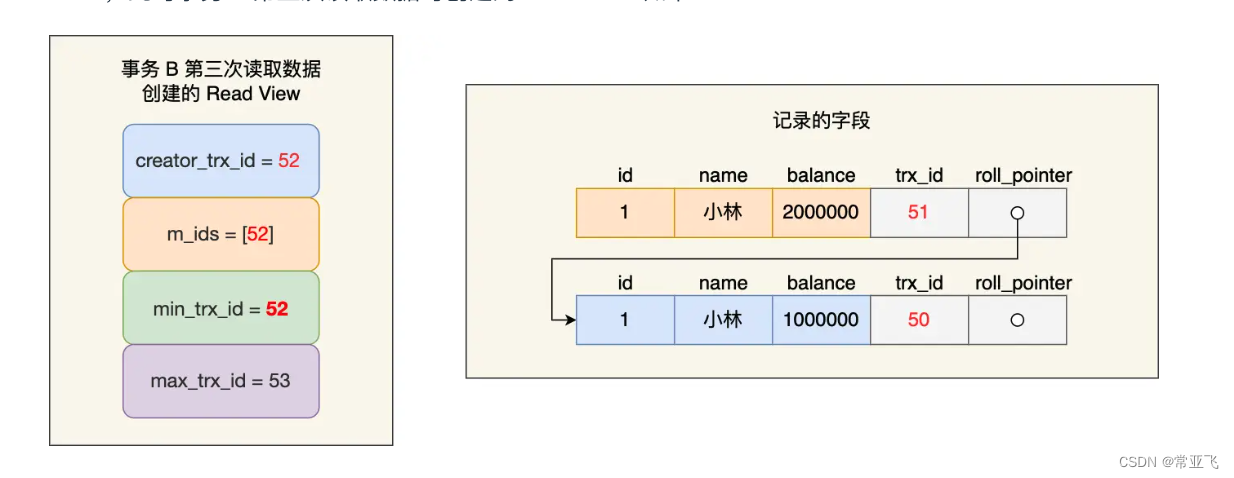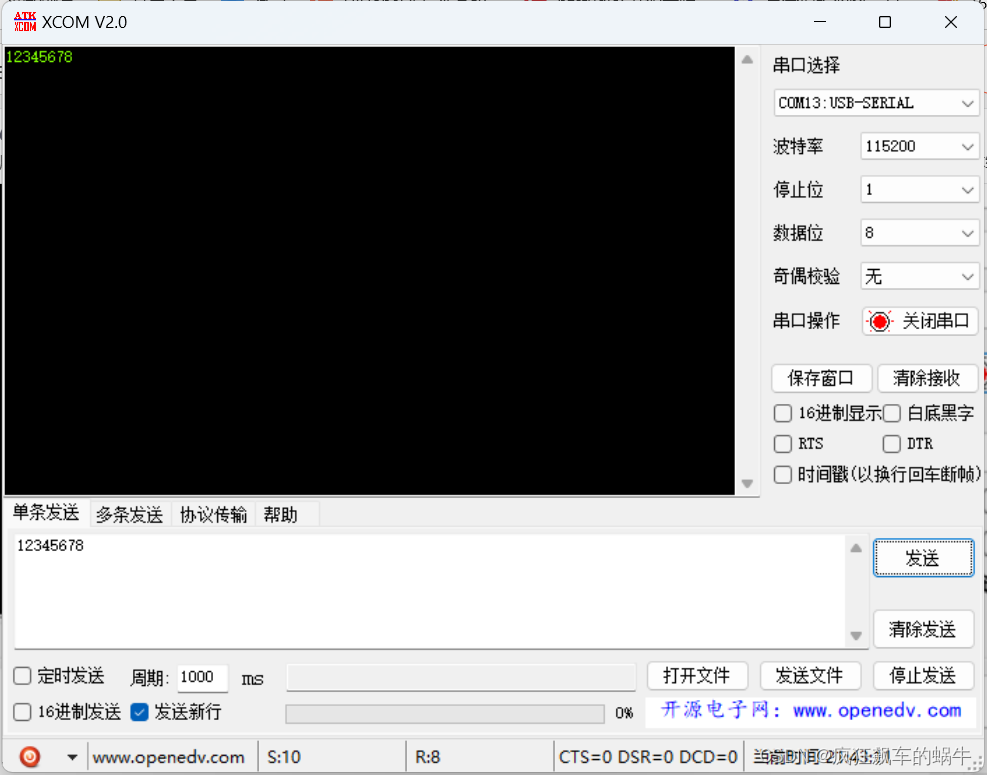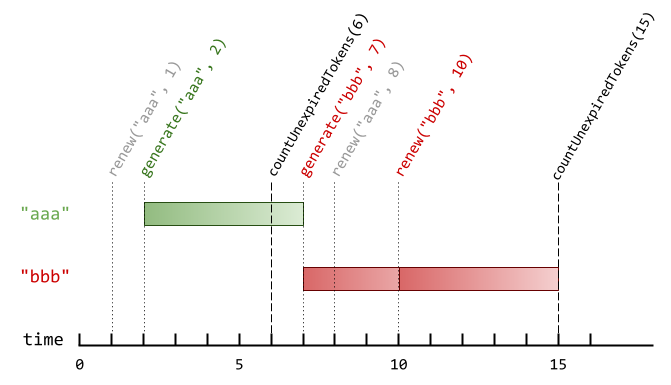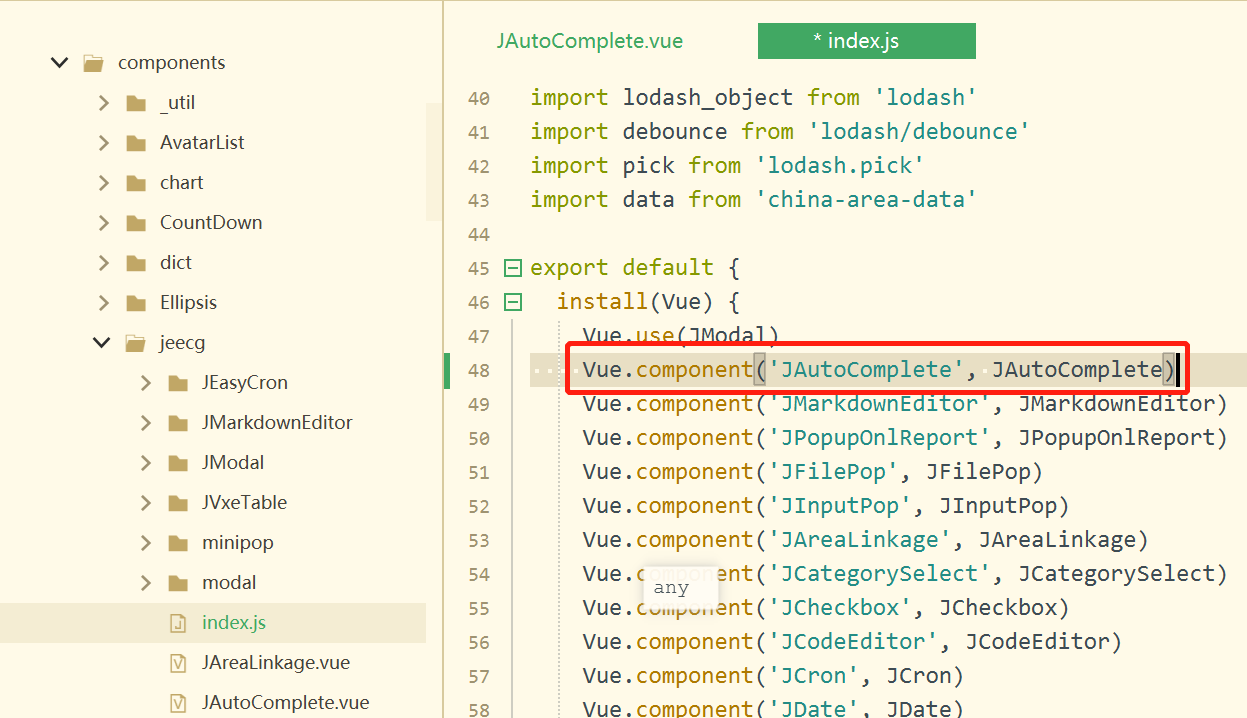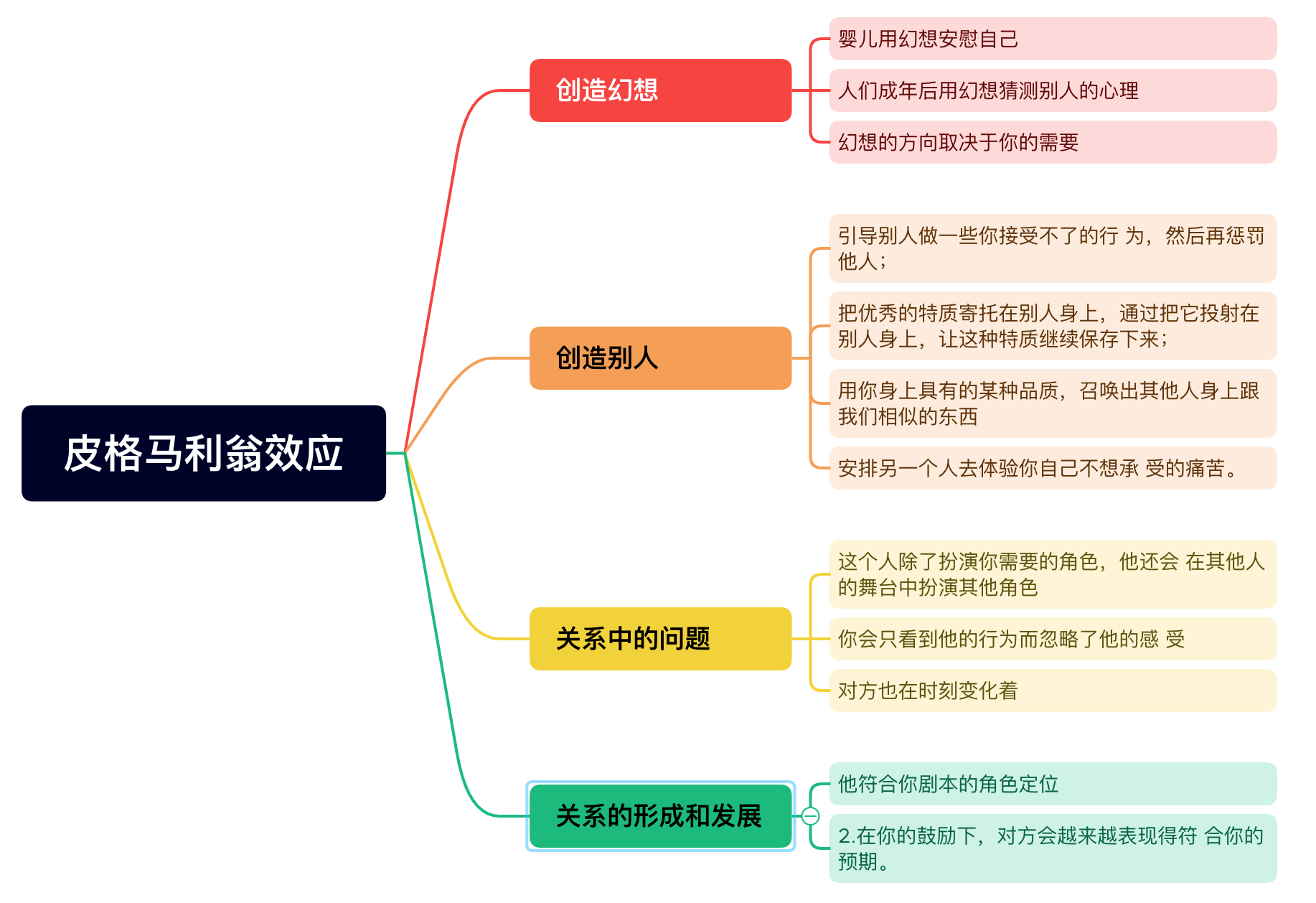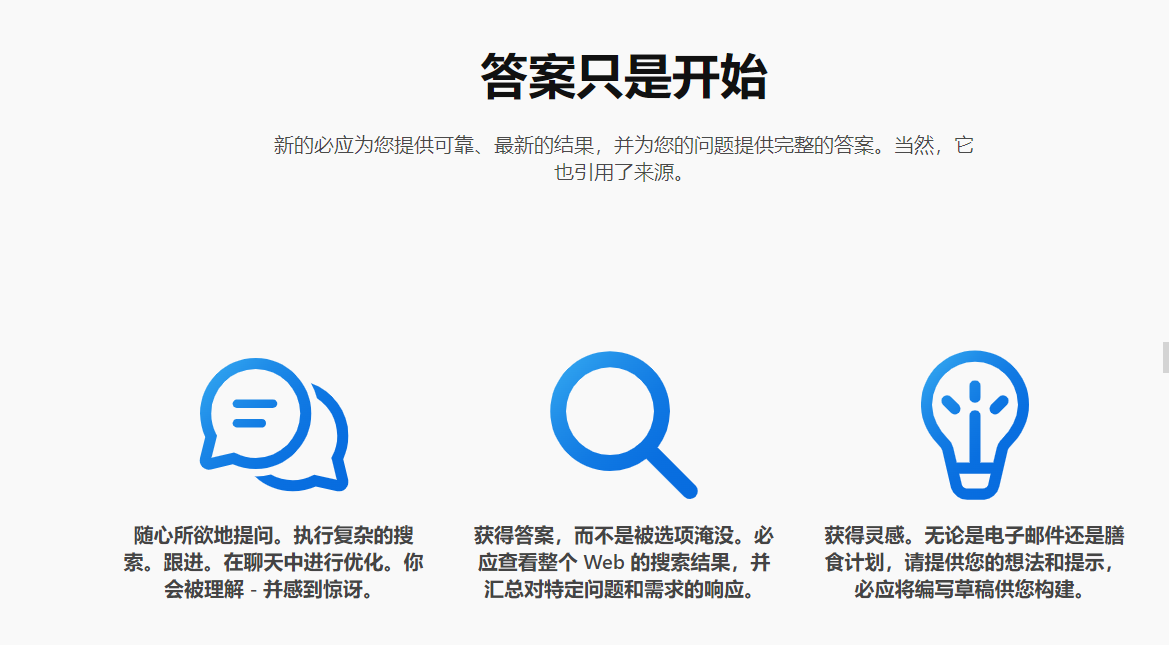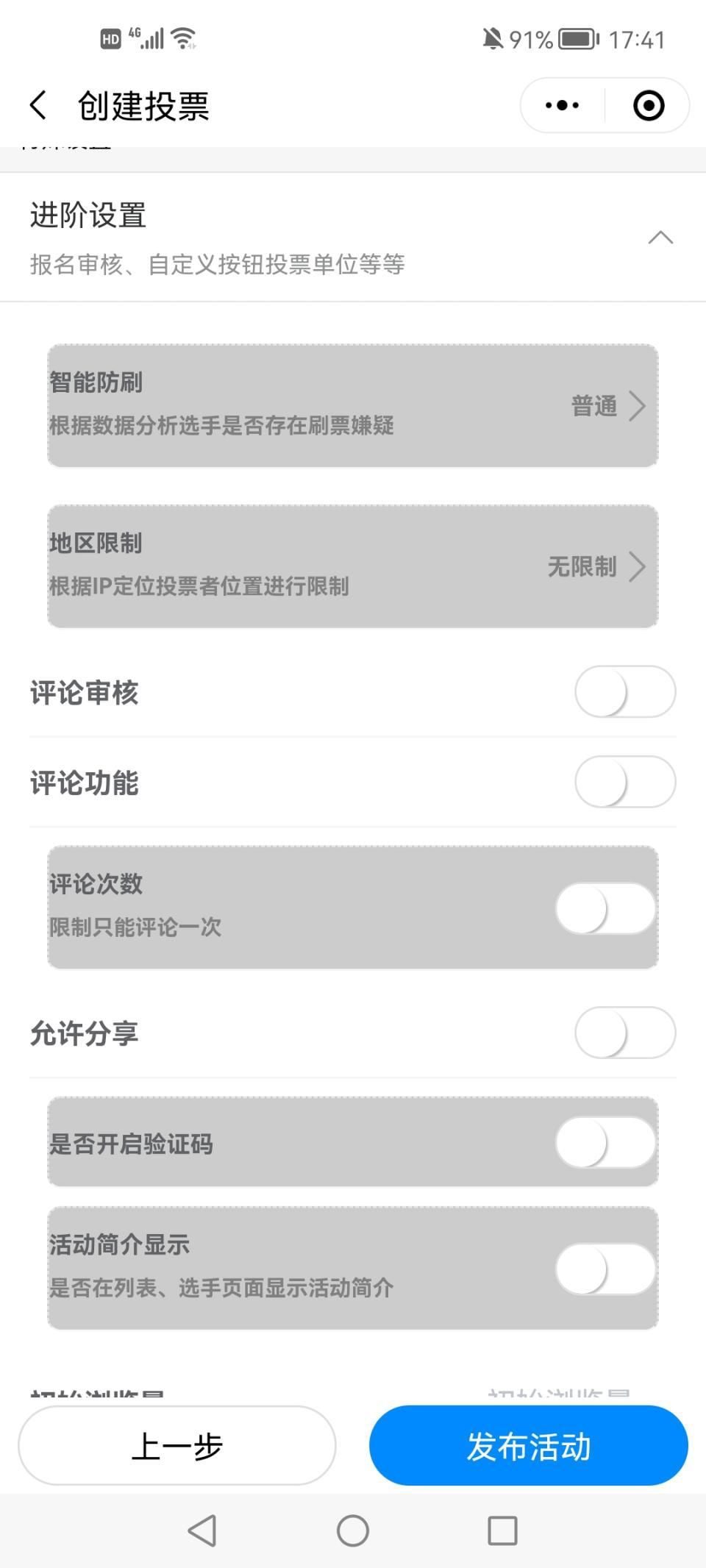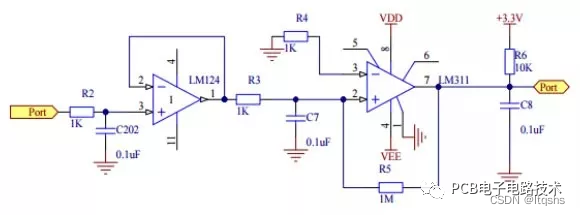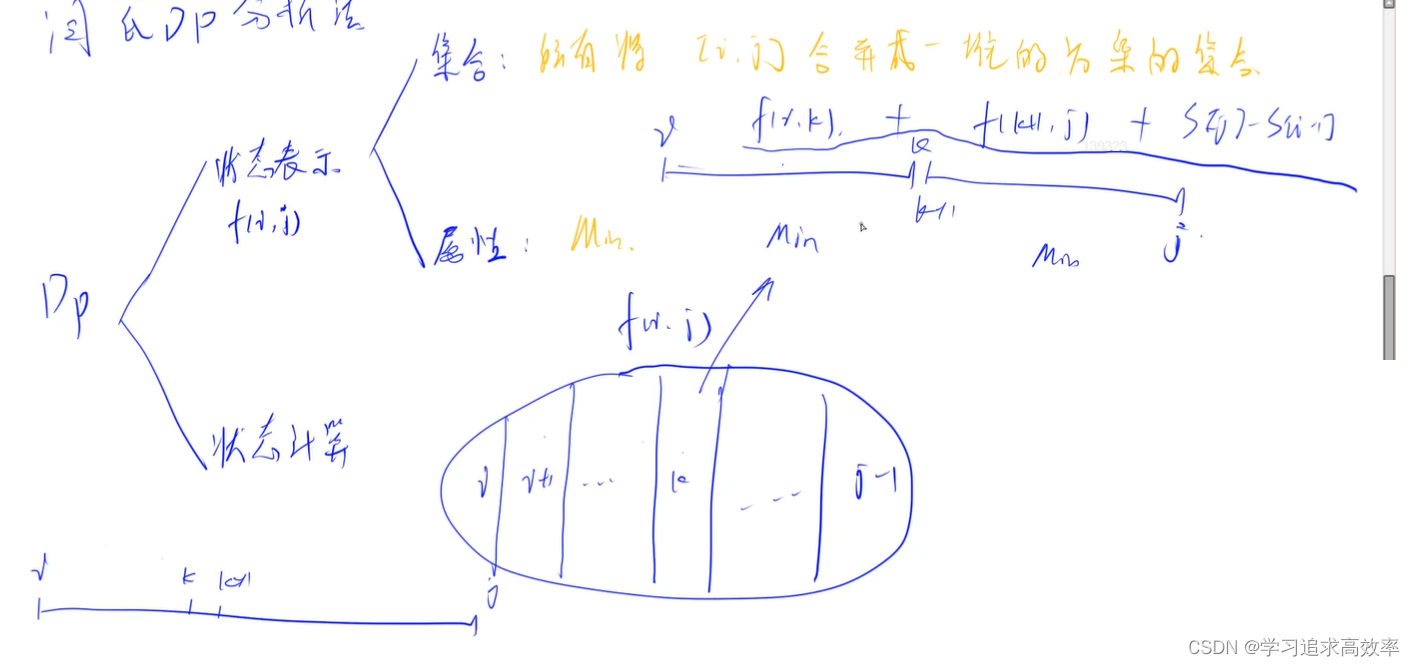现在web项目无处不在使用缓存技术,redis的身影可谓无处不在。但是又有多少项目使用到的是redis的集群?大概很多项目只是用到单机版的redis吧。作为缓存的一块,set ,get数据。用的不亦乐乎。但是对于高可用系统来说,数据集群是很有必要的。
我们看单机版的redis配置。
springBoot引入maven依赖
<dependency>
<groupId>org.springframework.boot</groupId>
<artifactId>spring-boot-starter-cache</artifactId>
</dependency>
<dependency>
<groupId>org.springframework.boot</groupId>
<artifactId>spring-boot-starter-data-redis</artifactId>
</dependency>
<dependency>
<groupId>com.google.code.gson</groupId>
<artifactId>gson</artifactId>
</dependency>
<dependency>
<groupId>org.springframework.session</groupId>
<artifactId>spring-session-data-redis</artifactId>
</dependency>
<dependency>
<groupId>redis.clients</groupId>
<artifactId>jedis</artifactId>
</dependency>配置springboot yml文件 redis连接
spring:
redis:
host: 127.0.0.1
port: 6379
password: 123456
maxIdle: 20
minIdle: 10
maxTotal: 100
database: 2
busiDb: 9
boeDb: 2
eximportDb: 5
session:
store-type: redis
cache:
type: redis操作redis的工具类:
import java.util.ArrayList;
import java.util.Calendar;
import java.util.Collection;
import java.util.Collections;
import java.util.LinkedHashMap;
import java.util.List;
import java.util.Map;
import java.util.Set;
import java.util.concurrent.TimeUnit;
import javax.annotation.Resource;
import org.apache.commons.lang.StringUtils;
import org.slf4j.Logger;
import org.slf4j.LoggerFactory;
import org.springframework.beans.factory.annotation.Autowired;
import org.springframework.boot.autoconfigure.data.redis.RedisProperties;
import org.springframework.dao.DataAccessException;
import org.springframework.data.redis.connection.RedisConnection;
import org.springframework.data.redis.core.RedisCallback;
import org.springframework.data.redis.core.RedisTemplate;
import org.springframework.data.redis.core.ValueOperations;
import org.springframework.stereotype.Component;
import com.google.gson.Gson;
import cn.ctg.common.enums.EnumType;
import cn.ctg.common.util.constants.Constant;
import cn.hutool.core.convert.Convert;
import cn.hutool.core.thread.ThreadUtil;
import cn.hutool.core.util.RandomUtil;
import cn.hutool.core.util.StrUtil;
import redis.clients.jedis.Jedis;
import redis.clients.jedis.JedisCluster;
/**
* Redis工具类
*
*/
@Component
public class RedisUtils {
private final Logger logger = LoggerFactory.getLogger(this.getClass());
@Autowired
private RedisTemplate redisTemplate;
@Resource(name = "redisTemplate")
private ValueOperations<String, String> valueOperations;
@Autowired
private RedisExtendService redisExtendService;
/** 加分布式锁的LUA脚本 */
private static final String LOCK_LUA =
"if redis.call('setNx',KEYS[1],ARGV[1])==1 then return redis.call('expire',KEYS[1],ARGV[2]) else return 0 end";
/** 计数器的LUA脚本 */
private static final String INCR_LUA =
"local current = redis.call('incr',KEYS[1]);" +
" local t = redis.call('ttl',KEYS[1]); " +
"if t == -1 then " +
"redis.call('expire',KEYS[1],ARGV[1]) " +
"end; " +
"return current";
/** 解锁的LUA脚本 */
private static final String UNLOCK_LUA =
"if redis.call('get', KEYS[1]) == ARGV[1] then return redis.call('del', KEYS[1]) else return 0 end";
private static final Long SUCCESS = 1L;
/** 互斥锁过期时间(分钟) */
private static final long MUTEX_WAIT_MILLISECONDS = 50;
/** 编号规则生成线程等待次数 ((10 * 1000) / 50) + 1 */
public static final long RULE_CODE_THREAD_WAIT_COUNT = 200;
/** 互斥锁等待时间(毫秒) */
private static final long MUTEX_EXPIRE_MINUTES = 3;
/**
* 不设置过期时长
*/
public final static long NOT_EXPIRE = -1;
/**
* 默认过期时长,单位:秒
*/
public final static long DEFAULT_EXPIRE = 7200; // 2小时
/**
* 会员卡缓存失效时间 2小时
*/
public final static long CARD_DEFAULT_EXPIRE = 7200;
/**
* 默认过期时长,1天
*/
public final static long DEFAULT_A_DAY = 86400;
/**
* 默认过期时长,1分钟
*/
public final static long DEFAULT_A_MIN = 60 ;
/**
* 默认过期时长,2分钟
*/
public final static long DEFAULT_TWO_MIN = 120 ;
/**
* 保存数据
*
* @param key
* @param value
* @param expire 过期时间,单位s
*/
public void set(String key, Object value, long expire) {
String valueJson = toJson(value);
valueOperations.set(key, valueJson);
if (expire != NOT_EXPIRE) {
redisTemplate.expire(key, expire, TimeUnit.SECONDS);
}
redisExtendService.redisDataChange(key, valueJson, EnumType.CRUD_TYPE.CREATE.getValue());
}
/**
* 判断key是否存在
*
* @param key
*/
public Boolean hasKey(String key) {
if (StringUtils.isNotBlank(key)) {
return valueOperations.getOperations().hasKey(key);
}
return Boolean.FALSE;
}
/**
* @param key
* @param value
*/
public void set(String key, Object value) {
set(key, value, NOT_EXPIRE);
}
public <T> T get(String key, Class<T> clazz, long expire) {
String value = Convert.toStr(valueOperations.get(key));
if (expire != NOT_EXPIRE) {
redisTemplate.expire(key, expire, TimeUnit.SECONDS);
}
return value == null ? null : fromJson(value, clazz);
}
/**
* 批量从Redis中获取数据
*
* @param valueMap 需要存储的数据集合
* @param expire 过期时间,秒
* @return java.util.List<T> 返回值
*/
public void batchSet(Map<String, String> valueMap, long expire) {
valueOperations.multiSet(valueMap);
if (expire != NOT_EXPIRE) {
for (String key : valueMap.keySet()) {
redisTemplate.expire(key, expire, TimeUnit.SECONDS);
}
}
}
/**
* 批量删除
*
* @param keys 需要删除的KEY集合
* @return void
*/
public void batchDelete(Collection<String> keys) {
redisTemplate.delete(keys);
}
/**
* 批量从Redis中获取数据
*
* @param keyList 需要获取的Key集合
* @param clazz 需要转换的类型
* @return java.util.List<T> 返回值
*/
public <T> Map<String, T> batchGet(List<String> keyList, Class<T> clazz) {
List<String> objectList = valueOperations.multiGet(keyList);
Map<String, T> map = new LinkedHashMap<>(objectList.size());
for (int i = 0; i < keyList.size(); i++) {
String value = Convert.toStr(objectList.get(i));
if (!String.class.equals(clazz)) {
map.put(keyList.get(i), fromJson(value, clazz));
} else {
map.put(keyList.get(i), (T)value);
}
}
return map;
}
public <T> T get(String key, Class<T> clazz) {
return get(key, clazz, NOT_EXPIRE);
}
/**
* 使用 父编码+当前编码获取+集团+语言 获取名称
*
* @param code 父编码
* @param dictCode 当前编码
* @param language 语言 UserUtils.getLanguage()
* @param groupId 集团ID
*/
public String get(String code, String dictCode, String language, String groupId) {
if (StringUtils.isBlank(dictCode)) {
return "";
}
String key = RedisKeys.getSysDictKey(code, dictCode, language, groupId);
return get(key, NOT_EXPIRE);
}
public String get(String key, long expire) {
String value = Convert.toStr(valueOperations.get(key));
if (expire != NOT_EXPIRE) {
redisTemplate.expire(key, expire, TimeUnit.SECONDS);
}
return value;
}
public String get(String key) {
return get(key, NOT_EXPIRE);
}
public void delete(String key) {
redisTemplate.delete(key);
redisExtendService.redisDataChange(key, "", EnumType.CRUD_TYPE.DELETE.getValue());
}
/**
* Object转成JSON数据
*/
private String toJson(Object object) {
if (object instanceof Integer || object instanceof Long || object instanceof Float || object instanceof Double
|| object instanceof Boolean || object instanceof String) {
return String.valueOf(object);
}
return new Gson().toJson(object);
}
/**
* JSON数据,转成Object
*/
private <T> T fromJson(String json, Class<T> clazz) {
return new Gson().fromJson(json, clazz);
}
/**
* 获取分布式锁,默认过期时间3分钟
*
* @param key 锁的KEY
* @return java.lang.Boolean true为获取到锁,可以下一步业务, false为没有获取到锁
*/
public Boolean setMutexLock(String key) {
return setMutexLockAndExpire(key, getMutexLockExpireMinutes(), TimeUnit.MINUTES);
}
/**
* 获取分布式锁,带Redis事务
*
* @param key 锁的KEY
* @param timeout 锁时效时间,默认单位:秒
* @param unit 锁失效时间单位,为null则默认秒
* @return java.lang.Boolean true为获取到锁,可以下一步业务, false为没有获取到锁
*/
public Boolean setMutexLockAndExpire(String key, long timeout, TimeUnit unit) {
return setMutexLockAndExpire(key, Constant.RESULT_1, timeout, unit);
}
/**
* 获取分布式锁,带Redis事务
* 适用于同一业务,不同的请求用不同的锁,把value当成
* @param key 锁的KEY
* @param value 锁的值,一定要跟解锁的值一样,否则会导致无法解锁
* @param timeout 锁时效时间,默认单位:秒
* @param unit 锁失效时间单位,为null则默认秒
* @return java.lang.Boolean true为获取到锁,可以下一步业务, false为没有获取到锁
*/
public Boolean setMutexLockAndExpire(String key, String value, long timeout, TimeUnit unit) {
value = StrUtil.appendIfMissing(StrUtil.prependIfMissing(value,"\""),"\"");
Long result = executeLua(key, value, LOCK_LUA, timeout, unit, Long.class);
return SUCCESS.equals(result);
}
/**
* 解锁
*
* @param key 锁的Key
* @return boolean
*/
public boolean unlock(String key) {
return unlock(key, Constant.RESULT_1);
}
/**
* 解锁
*
* @param key 锁的Key
* @param value 锁的value,一定要跟加锁的value一致,否则会认为不是同一个锁,不会释放
* @return boolean
*/
public boolean unlock(String key, String value) {
value = StrUtil.appendIfMissing(StrUtil.prependIfMissing(value,"\""),"\"");
Long result = executeLua(key, value, UNLOCK_LUA,null, null, Long.class);
return SUCCESS.equals(result);
}
/**
* 获取等待锁,如果没有获取到锁就一直等待获取,直到超过waitTime的时间
*
* @param key 锁的key
* @param timeout 锁的超时时间
* @param unit 锁的超时时间单位
* @param waitTime 获取锁时的等待时间,一直等不超时则填-1,单位:毫秒
* @return java.lang.Boolean true为获取到锁,可以下一步业务, false为没有获取到锁
*/
public Boolean setMutexWaitLock(String key, long timeout, TimeUnit unit, long waitTime) {
long start = System.currentTimeMillis();
while (true) {
boolean result = setMutexLockAndExpire(key, timeout, unit);
if (result) {
return true;
} else {
long current = System.currentTimeMillis();
// 超过等待时间还没获取到锁则返回false
if (waitTime > 0 && (current - start > waitTime)) {
logger.warn("redis分布式锁获取失败,key[{}],等待时间[{}]", key, waitTime);
return false;
}
// 等待100毫秒后重试
ThreadUtil.sleep(100);
}
}
}
public long getMutexLockExpireMinutes() {
return MUTEX_EXPIRE_MINUTES;
}
/**
* 获取自增序列号
*
* @param key 序列号的KEY
* @param seq 自增值,默认自增1
* @return java.lang.Long 自增后的值
*/
public Long incr(String key, Long seq, long timeout, TimeUnit unit) {
return executeLua(key, null, INCR_LUA, timeout, unit, Long.class);
}
/**
* 执行LUA脚本
*
* @param key redisKey
* @param value 值
* @param lua lua脚本
* @param timeout 超时时间
* @param unit 超时单位
* @param clazz 返回值类型
* @return T 返回值
*/
public <T> T executeLua(String key, Object value, String lua, Long timeout, TimeUnit unit, Class<T> clazz){
// 有时间单位则转成秒,否则默认秒
if (unit != null) {
timeout = unit.toSeconds(timeout);
}
List<String> args = new ArrayList<>(2);
if(value != null){
args.add(Convert.toStr(value));
}
if(timeout != null){
args.add(Convert.toStr(timeout));
}
//spring自带的执行脚本方法中,集群模式直接抛出不支持执行脚本异常,此处拿到原redis的connection执行脚本
T result = (T)redisTemplate.execute(new RedisCallback<T>() {
@Override
public T doInRedis(RedisConnection connection) throws DataAccessException {
Object nativeConnection = connection.getNativeConnection();
// 集群模式和单点模式虽然执行脚本的方法一样,但是没有共同的接口,所以只能分开执行
// 集群
if (nativeConnection instanceof JedisCluster) {
return (T) ((JedisCluster) nativeConnection).eval(lua, Collections.singletonList(key), args);
}
// 单点
else if (nativeConnection instanceof RedisProperties.Jedis) {
return (T) ((Jedis) nativeConnection).eval(lua, Collections.singletonList(key), args);
}
return null;
}
});
return result;
}
public void expire(String key, long timeout, TimeUnit unit) {
try {
redisTemplate.expire(key, timeout, unit);
} catch (Exception e) {
logger.error("设置缓存过期时间失败,key={},timeout={},unit={}", key, timeout, unit, e);
}
}
/**
* 获取互斥线程等待时间
*
* @return
*/
public long getMutexThreadWaitMilliseconds() {
return MUTEX_WAIT_MILLISECONDS;
}
public Set<String> getKeys(String key) {
return redisTemplate.keys(key);
}
/**
* 获取随机秒数 如:getRandomTime(30, 7)返回30天到第37天的随机秒数,即时效时间最小为30天,最大为37天
*
* @param afterDays N天之后
* @param rangeDay 日期范围
* @return java.lang.Long 秒数
*/
public static Long getRandomTime(int afterDays, int rangeDay) {
Calendar calendar = Calendar.getInstance();
long curTime = calendar.getTimeInMillis();
calendar.add(Calendar.DAY_OF_MONTH, afterDays);
long minTime = calendar.getTimeInMillis();
calendar.add(Calendar.DAY_OF_MONTH, rangeDay);
long maxTime = calendar.getTimeInMillis();
long randomTime = RandomUtil.randomLong(minTime, maxTime);
return (randomTime - curTime) / 1000;
}
/**
* 获取30天内的随机秒数
*
* @return long 返回1天后30天内的随机秒数
*/
public static long getRandomTime() {
return getRandomTime(1, 30);
}
public void setnx(String key,String value){
}
}
说说使用集群的情况。
redis的主从复制。
主从复制,是指将一台Redis服务器的数据,复制到其他的Redis服务器。前者称为主节点(Master),后者称为从节点(Slave);数据的复制是单向的,只能由主节点到从节点。
默认情况下,每台Redis服务器都是主节点;且一个主节点可以有多个从节点(或没有从节点),但一个从节点只能有一个主节点。
redis哨兵模式。
哨兵(sentinel):是一个分布式系统,用于对主从结构中的每台服务器进行监控,当出现故障时通过投票机制选择新的 Master 并将所有 Slave 连接到新的 Master。所以整个运行哨兵的集群的数量不得少于3个节点。
选三台redis搭建集群

添加springBootmaven依赖
<!--redis-->
<dependency>
<groupId>org.springframework.boot</groupId>
<artifactId>spring-boot-starter-data-redis</artifactId>
</dependency>
<!--连接池依赖-->
<dependency>
<groupId>org.apache.commons</groupId>
<artifactId>commons-pool2</artifactId>
</dependency>
<!--web-->
<dependency>
<groupId>org.springframework.boot</groupId>
<artifactId>spring-boot-starter-web</artifactId>
</dependency>
<!--lombok-->
<dependency>
<groupId>org.projectlombok</groupId>
<artifactId>lombok</artifactId>
<version>1.18.24</version>
</dependency>
集群yml文件配置
server:
port: 3035
spring:
redis:
# redis哨兵配置
sentinel:
# 主节点名称
master: mymaster
nodes:
- 192.168.200.150:6379
- 192.168.200.150:6380
- 192.168.200.150:6381
# # 集群的部署方式
# cluster:
# nodes:
# - 192.168.200.150:6379
# - 192.168.200.150:6380
# - 192.168.200.150:6381
# # #最大重定向次数(由于集群中数据存储在多个节点,所以在访问数据时需要通过转发进行数据定位)
# max-redirects: 2
# lettuce:
# pool:
# max-idle: 10 # 连接池中的最大空闲连接
# max-wait: 500 # 连接池最大阻塞等待时间(使用负值表示没有限制)
# max-active: 8 # 连接池最大连接数(使用负值表示没有限制)
# min-idle: 0 # 连接池中的最小空闲连接
# 服务应用名
application:
name: redis-cluster
logging:
pattern:
console: '%date{yyyy-MM-dd HH:mm:ss.SSS} | %highlight(%5level) [%green(%16.16thread)] %clr(%-50.50logger{49}){cyan} %4line -| %highlight(%msg%n)'
level:
root: info
io.lettuce.core: debug
org.springframework.data.redis: debug配置读写分离
import com.fasterxml.jackson.annotation.JsonAutoDetect;
import com.fasterxml.jackson.annotation.PropertyAccessor;
import com.fasterxml.jackson.databind.ObjectMapper;
import com.fasterxml.jackson.databind.jsontype.impl.LaissezFaireSubTypeValidator;
import io.lettuce.core.ReadFrom;
import org.springframework.boot.autoconfigure.data.redis.RedisProperties;
import org.springframework.context.annotation.Bean;
import org.springframework.context.annotation.Configuration;
import org.springframework.context.annotation.Primary;
import org.springframework.data.redis.connection.RedisConnectionFactory;
import org.springframework.data.redis.connection.RedisSentinelConfiguration;
import org.springframework.data.redis.connection.lettuce.LettuceConnectionFactory;
import org.springframework.data.redis.connection.lettuce.LettucePoolingClientConfiguration;
import org.springframework.data.redis.core.RedisTemplate;
import org.springframework.data.redis.serializer.Jackson2JsonRedisSerializer;
import org.springframework.data.redis.serializer.StringRedisSerializer;
import java.text.SimpleDateFormat;
import java.util.HashSet;
@Configuration
public class RedisConfiguration {
/**
*
* 配置redis序列化json
* @param redisConnectionFactory
* @return
*/
@Bean
@Primary //若有相同类型的Bean时,优先使用此注解标注的Bean
public RedisTemplate<String, Object> redisTemplate(RedisConnectionFactory redisConnectionFactory) {
// 为了开发方便,一般直接使用<String, Object>
RedisTemplate<String, Object> template = new RedisTemplate<>();
template.setConnectionFactory(redisConnectionFactory);
// 配置具体的序列化方式
// JSON解析任意对象
Jackson2JsonRedisSerializer jackson2JsonRedisSerializer = new Jackson2JsonRedisSerializer(Object.class);
ObjectMapper om = new ObjectMapper();
// 指定要序列化的域,field,get和set,以及修饰符范围,ANY是都有包括private和public
om.setVisibility(PropertyAccessor.ALL, JsonAutoDetect.Visibility.ANY);
// 指定序列化输入的类型,类必须是非final修饰的,final修饰的类,比如String,Integer等会跑出异常
om.activateDefaultTyping(LaissezFaireSubTypeValidator.instance, ObjectMapper.DefaultTyping.NON_FINAL);
// 设置日期格式
om.setDateFormat(new SimpleDateFormat("yyyy-MM-dd HH:mm:ss"));
jackson2JsonRedisSerializer.setObjectMapper(om);
// String的序列化
StringRedisSerializer stringRedisSerializer = new StringRedisSerializer();
//key采用String的序列化
template.setKeySerializer(stringRedisSerializer);
//hash的key也采用String的序列化
template.setHashKeySerializer(stringRedisSerializer);
//value的序列化方式采用jackson
template.setValueSerializer(jackson2JsonRedisSerializer);
//hash的value序列化方式采用jackson
template.setHashValueSerializer(jackson2JsonRedisSerializer);
//设置所有配置
template.afterPropertiesSet();
return template;
}
/**
* 配置读写分离
* @param redisProperties
* @return
*/
@Bean
public RedisConnectionFactory lettuceConnectionFactory(RedisProperties redisProperties) {
// 配置哨兵节点以及主节点
RedisSentinelConfiguration redisSentinelConfiguration = new RedisSentinelConfiguration(
redisProperties.getSentinel().getMaster(), new HashSet<>(redisProperties.getSentinel().getNodes())
);
// 配置读写分离
LettucePoolingClientConfiguration lettuceClientConfiguration = LettucePoolingClientConfiguration.builder()
// 读写分离,这里的ReadFrom是配置Redis的读取策略,是一个枚举,包括下面选择
// MASTER 仅读取主节点
// MASTER_PREFERRED 优先读取主节点,如果主节点不可用,则读取从节点
// REPLICA_PREFERRED 优先读取从节点,如果从节点不可用,则读取主节点
// REPLICA 仅读取从节点
// NEAREST 从最近节点读取
// ANY 从任意一个从节点读取
.readFrom(ReadFrom.REPLICA_PREFERRED)
.build();
return new LettuceConnectionFactory(redisSentinelConfiguration, lettuceClientConfiguration);
}
}
再使用工具类操作就行。
package com.vinjcent.utils;
import org.springframework.beans.factory.annotation.Autowired;
import org.springframework.data.redis.core.RedisTemplate;
import org.springframework.stereotype.Component;
import java.time.LocalDateTime;
import java.time.ZoneOffset;
import java.time.format.DateTimeFormatter;
import java.util.Arrays;
import java.util.List;
import java.util.Map;
import java.util.Set;
import java.util.concurrent.TimeUnit;
@Component
public final class RedisUtils {
private final RedisTemplate<String, Object> redisTemplate;
/**
* 可按自己需求生成"起始时间戳"
*/
private static final long BEGIN_TIMESTAMP = 1640995200L;
/**
* 用于时间戳左移32位
*/
public static final int MOVE_BITS = 32;
@Autowired
public RedisUtils(RedisTemplate<String, Object> redisTemplate) {
this.redisTemplate = redisTemplate;
}
//=============================common===================================
/**
* 指定缓存失效时间
* @param key 键
* @param time 时间(秒)
* @return whether the key has expired
*/
public boolean expire(String key, long time){
try {
if(time > 0){
redisTemplate.expire(key, time, TimeUnit.SECONDS);
}
return true;
} catch (Exception e) {
e.printStackTrace();
return false;
}
}
/**
* 指定缓存失效时间(自定义时间单位)
* @param key 键
* @param time 时间(秒)
* @return whether the key has expired
*/
public boolean expire(String key, long time, TimeUnit unit){
try {
if(time > 0){
redisTemplate.expire(key, time, unit);
}
return true;
} catch (Exception e) {
e.printStackTrace();
return false;
}
}
/**
* 根据key获取过期时间(默认获取的是秒单位)
* @param key 键(不能为null)
* @return the remaining time, "0" means never expire
*/
public long getExpire(String key){
Long time = redisTemplate.getExpire(key, TimeUnit.SECONDS);
if (time != null) {
return time;
}
return -1L;
}
/**
* 根据key获取过期时间(自定义时间单位)
* @param key 键(不能为null)
* @return the remaining time, "0" means never expire
*/
public long getExpire(String key, TimeUnit unit){
Long time = redisTemplate.getExpire(key, unit);
if (time != null) {
return time;
}
return -1L;
}
/**
* 判断key是否存在
* @param key 键
* @return whether the key exist
*/
public boolean hasKey(String key) {
Boolean flag = redisTemplate.hasKey(key);
try {
return Boolean.TRUE.equals(flag);
} catch (Exception e) {
e.printStackTrace();
return false;
}
}
/**
* 删除缓存
* @param key 键,可以传递一个值或多个
*/
public void del(String... key) {
if(key != null && key.length > 0){
if (key.length == 1){
redisTemplate.delete(key[0]);
}else {
redisTemplate.delete(Arrays.asList(key));
}
}
}
//=============================String===================================
/**
* 普通缓存获取(泛型)
* @param key key键
* @return the value corresponding the key
*/
public Object get(String key){ return key == null ? null : redisTemplate.opsForValue().get(key);}
/**
* 普通缓存获取(泛型)
* @param key key键
* @return the value corresponding the key
* @param targetType 目标类型
* @param <T> 目标类型参数
* @return the generic value corresponding the key
*/
public <T> T get(String key, Class<T> targetType){ return key == null ? null : JsonUtils.objParse(redisTemplate.opsForValue().get(key), targetType);}
/**
* 普通缓存放入
* @param key 键
* @param value 值
* @return whether true or false
*/
public boolean set(String key, Object value){
try {
redisTemplate.opsForValue().set(key,value);
return true;
} catch (Exception e) {
e.printStackTrace();
return false;
}
}
/**
* 普通缓存放入并设置时间
* @param key 键
* @param value 值
* @param time 时间(秒) --- time要大于0,如果time小于0,将设置为无期限
* @return whether true or false
*/
public boolean set(String key, Object value, long time){
try {
if(time > 0){
redisTemplate.opsForValue().set(key,value,time,TimeUnit.SECONDS);
}else {
set(key,value);
}
return true;
} catch (Exception e) {
e.printStackTrace();
return false;
}
}
/**
* 普通缓存放入并设置时间和时间单位
* @param key 键
* @param value 值
* @param time 时间(秒) --- time要大于0,如果time小于0,将设置为无期限
* @param timeUnit 时间单位
* @return whether true or false
*/
public boolean set(String key, Object value, long time, TimeUnit timeUnit){
try {
if(time > 0){
redisTemplate.opsForValue().set(key, value, time, timeUnit);
}else {
set(key,value);
}
return true;
} catch (Exception e) {
e.printStackTrace();
return false;
}
}
/**
* 递增
* @param key 键
* @param delta 要增加几(大于0)
* @return the value after increment
*/
public long incr(String key, long delta){
if(delta < 0){
throw new RuntimeException("递增因子必须大于0");
}
Long increment = redisTemplate.opsForValue().increment(key, delta);
return increment != null ? increment : 0L;
}
/**
* 递减
* @param key 键
* @param delta 要增加几(小于0)
* @return the value after decrement
*/
public long decr(String key, long delta){
if(delta < 0){
throw new RuntimeException("递减因子必须大于0");
}
Long increment = redisTemplate.opsForValue().increment(key, delta);
return increment != null ? increment : 0L; }
//=============================Map===================================
/**
* 根据hashKey获取hash列表有多少元素
* @param key 键(hashKey)
* @return the size of map
*/
public long hsize(String key) {
try {
return redisTemplate.opsForHash().size(key);
} catch (Exception e) {
e.printStackTrace();
return 0L;
}
}
/**
* HashGet 根据"项 中的 键 获取列表"
* @param key 键(hashKey)能为null
* @param item 项不能为null
* @return the value of the corresponding key
*/
public Object hget(String key, String item){ return redisTemplate.opsForHash().get(key, item);}
/**
* 获取HashKey对应的所有键值
* @param key 键(hashKey)
* @return 对应的多个键值
*/
public Map<Object, Object> hmget(String key) { return redisTemplate.opsForHash().entries(key);}
/**
* 获取HashKey对应的所有键值
* @param key 键(hashKey)
* @param keyType 键类型
* @param valueType 值类型
* @param <K> 键类型参数
* @param <V> 值类型参数
* @return a map
*/
public <K, V> Map<K, V> hmget(String key, Class<K> keyType, Class<V> valueType) {
return JsonUtils.mapParse(redisTemplate.opsForHash().entries(key), keyType, valueType);}
/**
* HashSet 存入多个键值对
* @param key 键(hashKey)
* @param map map 对应多个键值对
*/
public void hmset(String key, Map<String, Object> map) {
try {
redisTemplate.opsForHash().putAll(key,map);
} catch (Exception e) {
e.printStackTrace();
}
}
/**
* HashSet存入并设置时间
* @param key 键(hashKey)
* @param map 对应多个键值
* @param time 时间(秒)
* @return whether true or false
*/
public boolean hmset(String key, Map<String, Object> map, long time){
try {
redisTemplate.opsForHash().putAll(key,map);
if (time > 0){
expire(key,time);
}
return true;
} catch (Exception e) {
e.printStackTrace();
return false;
}
}
/**
* 向一张hash表中放入数据,如果不存在将创建
* @param key 键(hashKey)
* @param item 项
* @param value 值
* @return whether true or false
*/
public boolean hset(String key, String item, Object value){
try {
redisTemplate.opsForHash().put(key, item, value);
return true;
} catch (Exception e) {
e.printStackTrace();
return false;
}
}
/**
* 向一张hash表中放入数据,如果不存在将创建,并设置有效时间
* @param key 键(hashKey)
* @param item 项
* @param value 值
* @param time 时间(秒) 注意: 如果已经在hash表有时间,这里将会替换所有的时间
* @return whether true or false
*/
public boolean hset(String key, String item, Object value, long time){
try {
redisTemplate.opsForHash().put(key, item, value);
if (time > 0){
expire(key,time);
}
return true;
} catch (Exception e) {
e.printStackTrace();
return false;
}
}
/**
* 放入map集合数据,如果不存在将创建
* @param key 键(hashKey)
* @param value map集合
* @param <K> map集合键参数类型
* @param <V> map集合值参数类型
* @return whether true or false
*/
public <K, V> boolean hsetMap(String key, Map<K, V> value) {
try {
redisTemplate.opsForHash().putAll(key, value);
return true;
} catch (Exception e) {
e.printStackTrace();
return false;
}
}
/**
* 获取key对应的所有map键值对
* @param key 键(hashKey)
* @return the Map
*/
public Map<Object, Object> hgetMap(String key) {
try {
return redisTemplate.opsForHash().entries(key);
} catch (Exception e) {
e.printStackTrace();
return null;
}
}
/**
* 获取key对应的所有map键值对(泛型)
* @param key 键(hashKey)
* @param keyType 键类型
* @param valueType 值类型
* @param <K> 键类型参数
* @param <V> 值类型参数
* @return the Map
*/
public <K, V> Map<K, V> hgetMap(String key, Class<K> keyType, Class<V> valueType) {
try {
return JsonUtils.mapParse(redisTemplate.opsForHash().entries(key), keyType, valueType);
} catch (Exception e) {
e.printStackTrace();
return null;
}
}
/**
* 删除hash表中的值
* @param key 键(hashKey) 不能为null
* @param item 项可以是多个 不能为null
*/
public void hdel(String key, Object... item){
redisTemplate.opsForHash().delete(key,item);
}
/**
* 判断hash表是否有该项的值
* @param key 键(hashKey)不能为null
* @param item 项不能为null
* @return whether true or false
*/
public boolean hHasKey(String key, String item){
return redisTemplate.opsForHash().hasKey(key, item);
}
/**
* hash递增,如果不存在,就会创建一个,并把新增后的值返回
* @param key 键(hashKey)
* @param item 项
* @param by 要增加几(大于0)
* @return the value of the corresponding key after increment in one Map
*/
public double hincr(String key, String item, double by){
return redisTemplate.opsForHash().increment(key, item, by);
}
/**
* hash递减
* @param key 键(hashKey)
* @param item 项
* @param by 要减少几(小于0)
* @return the value of the corresponding key after decrement in one Map
*/
public double hdecr(String key, String item, double by){
return redisTemplate.opsForHash().increment(key, item, -by);
}
//=============================Set===================================
/**
* 根据key获取Set中的所有值
* @param key 键
* @return all values in one Set
*/
public Set<Object> sGet(String key){
try {
return redisTemplate.opsForSet().members(key);
} catch (Exception e) {
e.printStackTrace();
return null;
}
}
/**
* 根据value从一个Set集合中查询一个值,是否存在
* @param key 键
* @param value 值
* @return whether true or false
*/
public boolean sHasKey(String key, Object value){
try {
Boolean flag = redisTemplate.opsForSet().isMember(key, value);
return Boolean.TRUE.equals(flag);
} catch (Exception e) {
e.printStackTrace();
return false;
}
}
/**
* 将数据放入set缓存
* @param key 键
* @param values 值
* @return the number of adding successfully
*/
public long sSet(String key, Object... values){
try {
Long nums = redisTemplate.opsForSet().add(key, values);
return nums != null ? nums : 0L;
} catch (Exception e) {
e.printStackTrace();
return 0L;
}
}
/**
* 将set数据放入缓存,并设置有效时间
* @param key 键
* @param time 时间(秒)
* @param values 值,可以是多个
* @return the number of adding successfully
*/
public long sSetAndTime(String key, long time, Object... values){
try {
Long count = redisTemplate.opsForSet().add(key, values);
if(time > 0){
expire(key, time);
}
return count != null ? count : 0L;
} catch (Exception e) {
e.printStackTrace();
return 0L;
}
}
/**
* 获取set缓存的长度
* @param key 键
* @return the size of the Set
*/
public long sGetSetSize(String key){
try {
Long size = redisTemplate.opsForSet().size(key);
return size != null ? size : 0L;
} catch (Exception e) {
e.printStackTrace();
return 0L;
}
}
/**
* 移除值为values的
* @param key 键
* @param values 值(可以是多个)
* @return the number of removal
*/
public long setRemove(String key, Object... values){
try {
Long nums = redisTemplate.opsForSet().remove(key, values);
return nums != null ? nums : 0L;
} catch (Exception e) {
e.printStackTrace();
return 0;
}
}
//=============================List===================================
/**
* 获取list列表数据
* @param key 键
* @return all values of one List
*/
public List<Object> lget(String key) {
try {
return redisTemplate.opsForList().range(key, 0, -1);
} catch (Exception e) {
e.printStackTrace();
return null;
}
}
/**
/**
* 获取list列表数据(泛型)
* @param key 键
* @param targetType 目标类型
* @param <T> 目标类型参数
* @return all values of one List
*/
public <T> List<T> lget(String key, Class<T> targetType) {
try {
return JsonUtils.listParse(redisTemplate.opsForList().range(key, 0, -1), targetType);
} catch (Exception e) {
e.printStackTrace();
return null;
}
}
/**
* 获取list缓存的长度
* @param key 键
* @return the length of the List
*/
public long lGetListSize(String key){
try {
Long size = redisTemplate.opsForList().size(key);
return size != null ? size : 0L;
} catch (Exception e) {
e.printStackTrace();
return 0L;
}
}
/**
* 通过索引获取list中的值
* @param key 键
* @param index 索引 index >= 0 时, 0:表头, 1:第二个元素,以此类推... index < 0 时, -1:表尾, -2:倒数第二个元素,以此类推
* @return the value of the specified index in one List
*/
public Object lgetIndex(String key, long index){
try {
return redisTemplate.opsForList().index(key, index);
} catch (Exception e) {
e.printStackTrace();
return null;
}
}
/**
* 通过索引获取list中的值(泛型)
* @param key 键
* @param index 索引 index >= 0 时, 0:表头, 1:第二个元素,以此类推... index < 0 时, -1:表尾, -2:倒数第二个元素,以此类推
* @return the value of the specified index in one List
* @param targetType 目标类型
* @param <T> 目标类型参数
* @return the generic value of the specified index in one List
*/
public <T> T lgetIndex(String key, long index, Class<T> targetType) {
try {
return JsonUtils.objParse(redisTemplate.opsForList().index(key, index), targetType);
} catch (Exception e) {
e.printStackTrace();
return null;
}
}
/**
* 将list放入缓存
* @param key 键
* @param value 值
* @return whether true or false
*/
public boolean lSet(String key, Object value){
try {
redisTemplate.opsForList().rightPush(key, value);
return true;
} catch (Exception e) {
e.printStackTrace();
return false;
}
}
/**
* 将list放入缓存
* @param key 键
* @param value 值
* @param time 时间(秒)
* @return whether true or false
*/
public boolean lSet(String key, Object value, long time){
try {
redisTemplate.opsForList().rightPush(key, value);
if (time > 0){
expire(key, time);
}
return true;
} catch (Exception e) {
e.printStackTrace();
return false;
}
}
/**
* 将list集合放入缓存
* @param key 键
* @param values 值
* @return whether true or false
*/
public <T> boolean lSet(String key, List<T> values){
try {
Long nums = redisTemplate.opsForList().rightPushAll(key, values);
return nums != null;
} catch (Exception e) {
e.printStackTrace();
return false;
}
}
/**
* 将list集合放入缓存,并设置有效时间
* @param key 键
* @param values 值
* @param time 时间(秒)
* @return whether true or false
*/
public boolean lSet(String key, List<Object> values, long time){
try {
redisTemplate.opsForList().rightPushAll(key, values);
if (time > 0){
expire(key, time);
}
return true;
} catch (Exception e) {
e.printStackTrace();
return false;
}
}
/**
* 根据索引修改list中的某条数据
* @param key 键
* @param value 值
* @param index 索引
* @return whether true or false
*/
public boolean lUpdateIndex(String key, Object value, long index){
try {
redisTemplate.opsForList().set(key, index, value);
return true;
} catch (Exception e) {
e.printStackTrace();
return false;
}
}
/**
* 移除N个值为value
* @param key 键
* @param value 值
* @param number 移除多少个
* @return 返回移除的个数
*/
public long lRemove(String key, Object value, long number){
try {
Long count = redisTemplate.opsForList().remove(key, number, value);
return count != null ? count : 0L;
} catch (Exception e) {
e.printStackTrace();
return 0L;
}
}
//=============================Lock===================================
/**
* 解决缓存加锁问题
* @param key 锁名称
* @param value 锁值
* @param timeout 超时时间
* @param unit 时间单位
* @param <T> 锁值的数据类型
* @return 返回加锁成功状态
*/
public <T> boolean tryLock(String key, T value, long timeout, TimeUnit unit) {
Boolean flag = redisTemplate.opsForValue().setIfAbsent(key, value, timeout, unit);
return Boolean.TRUE.equals(flag);
}
/**
* 解决缓存解锁操作
* @param key 锁名称
* @return 返回解锁成功状态
*/
public boolean unLock(String key) {
Boolean flag = redisTemplate.delete(key);
return Boolean.TRUE.equals(flag);
}
/**
* 全局生成唯一ID策略
* 设计: 符号位(1位) - 时间戳(32位) - 序列号(31位)
* @param keyPrefix key的前缀
* @return 返回唯一ID
*/
public long globalUniqueKey(String keyPrefix) {
// 1. 生成时间戳
LocalDateTime now = LocalDateTime.now();
// 东八区时间
long nowSecond = now.toEpochSecond(ZoneOffset.UTC);
// 相减获取时间戳
long timestamp = nowSecond - BEGIN_TIMESTAMP;
// 2. 生成序列号(使用日期作为redis自增长超2^64限制,灵活使用年、月、日来存储)
// 获取当天日期
String date = now.format(DateTimeFormatter.ofPattern("yyyy:MM:dd"));
// 自增长
Long increment = redisTemplate.opsForValue().increment("icr:" + keyPrefix + ":" + date);
long count = increment != null ? increment : 0L;
// 3. 拼接并返回(使用二进制或运算)
return timestamp << MOVE_BITS | count;
}
}


